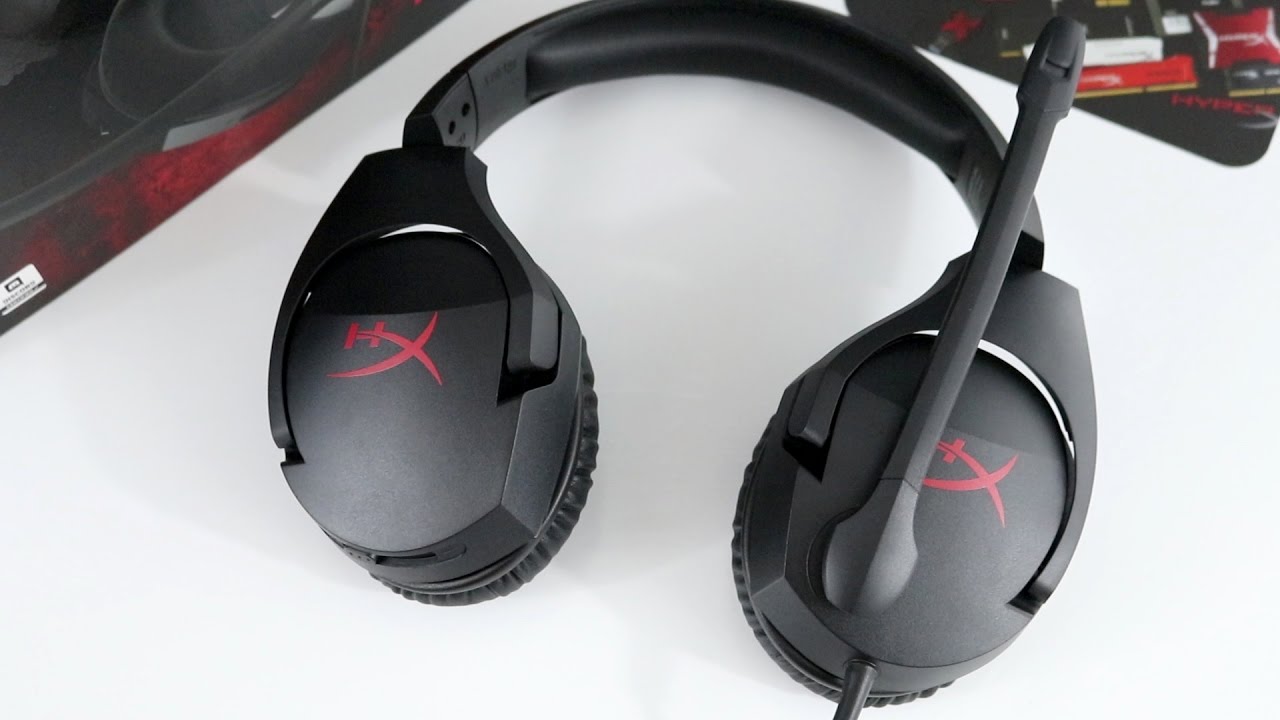Home>Production & Technology>Noise Cancellation>Adaptive Noise Cancellation Vs Active Noise Cancellation Which Is Better


Noise Cancellation
Adaptive Noise Cancellation Vs Active Noise Cancellation Which Is Better
Modified: January 22, 2024
Discover the differences between Adaptive Noise Cancellation (ANC) and Active Noise Cancellation (ANC). Find out which technology is better for effective noise cancellation.
(Many of the links in this article redirect to a specific reviewed product. Your purchase of these products through affiliate links helps to generate commission for AudioLover.com, at no extra cost. Learn more)
Table of Contents
- Introduction
- What is Adaptive Noise Cancellation?
- How Does Adaptive Noise Cancellation Work?
- Benefits of Adaptive Noise Cancellation
- Limitations of Adaptive Noise Cancellation
- What is Active Noise Cancellation?
- How Does Active Noise Cancellation Work?
- Benefits of Active Noise Cancellation
- Limitations of Active Noise Cancellation
- Adaptive vs Active Noise Cancellation: A Comparison
- Which Is Better: Adaptive or Active Noise Cancellation?
- Conclusion
Introduction
Noise pollution has become an inevitable part of our modern lives. Whether it’s the hustle and bustle of city streets, the chatter in a crowded café, or the constant hum of an airplane engine, unwanted noise can be a significant source of stress and distraction. This is where noise cancellation technology comes into play, aiming to create a serene and peaceful environment for individuals to work, relax, and enjoy their surroundings.
There are various types of noise cancellation technologies available today, but two of the most popular and effective methods are Adaptive Noise Cancellation (ANC) and Active Noise Cancellation (ANC). Both techniques strive to counteract external noise by generating anti-noise signals to cancel out the unwanted sounds, but they differ in their approach and effectiveness.
In this article, we will delve into the intricacies of both Adaptive Noise Cancellation and Active Noise Cancellation, exploring how they work, their benefits, limitations, and ultimately, which one may be more suitable for your specific needs.
What is Adaptive Noise Cancellation?
Adaptive Noise Cancellation (ANC) is a noise reduction technique that uses sophisticated algorithms and sensors to continuously monitor and adapt to the ambient noise in the environment. Unlike traditional passive noise cancellation methods that rely on physical barriers or insulation materials, ANC actively generates anti-noise signals that counteract and cancel out the incoming noise.
The key principle behind Adaptive Noise Cancellation is to analyze the ambient sounds and generate an equal but opposite sound wave to cancel them out. This is achieved by using microphones placed strategically near the listener to capture the incoming sound waves. These captured sounds are then analyzed and processed in real-time by an ANC circuit or digital signal processor, which generates anti-noise signals that are outputted through speakers or headphones.
The anti-noise signals produced by the ANC system are carefully designed to have the same amplitude and frequency as the ambient noise but with an opposite phase. When these anti-noise signals combine with the original noise, they cancel each other out, resulting in a significant reduction in overall noise levels.
What sets Adaptive Noise Cancellation apart from other noise reduction techniques is its ability to adapt and adjust to changes in the surrounding noise environment. ANC systems continuously monitor the ambient noise by analyzing the input from the microphones in real-time. Based on this analysis, the ANC algorithms make adjustments to the anti-noise signals to ensure optimal cancellation. This adaptability allows ANC to effectively reduce noise across a wide range of frequencies and in dynamic environments.
How Does Adaptive Noise Cancellation Work?
Adaptive Noise Cancellation (ANC) works by employing advanced algorithms and sensors to detect and counteract ambient noise in real-time. The process involves several steps that allow the ANC system to effectively reduce unwanted sounds:
- Microphone Sensing: ANC systems utilize multiple microphones strategically placed near the listener to capture the incoming sound waves. These microphones pick up both the desired audio, such as music or speech, as well as the unwanted noise.
- Signal Processing: The captured sound signals are then processed in real-time by an ANC circuit or digital signal processor. This processing involves analyzing the frequency, amplitude, and phase characteristics of the incoming noise.
- Generation of Anti-Noise: Based on the analysis of the incoming noise, the ANC system generates anti-noise signals that are precisely designed to have the same amplitude and frequency but with an opposite phase to the ambient noise.
- Combining Noise and Anti-Noise: The anti-noise signals are combined with the original noise signals at the listener’s ears. By superimposing the anti-noise with the ambient noise, destructive interference occurs, resulting in the cancellation of the unwanted noise.
- Real-Time Adaptation: The ANC system continuously monitors the ambient noise by analyzing the input from the microphones. If there are changes in the noise characteristics, the ANC algorithms adapt and make adjustments to the generated anti-noise signals to ensure optimal cancellation. This adaptability allows ANC to provide effective noise reduction in dynamic environments.
This iterative process of sensing, processing, generating anti-noise, and combining it with the original noise happens in real-time, providing a continuous reduction in the overall noise levels experienced by the listener.
Benefits of Adaptive Noise Cancellation
Adaptive Noise Cancellation (ANC) offers several benefits that make it a compelling technology for reducing unwanted noise in various environments. Here are some of the key advantages of using ANC:
- Effective Noise Reduction: ANC is highly effective in reducing a wide range of unwanted noise, including constant low-frequency hums, high-frequency chatter, and intermittent sounds. It can provide significant noise reduction, allowing individuals to focus, relax, or enjoy their audio content without distractions.
- Dynamic Adaptability: Unlike passive noise cancellation methods that rely on physical barriers, ANC has the ability to continuously analyze and adapt to changes in the ambient noise environment. This adaptability ensures that ANC can effectively cancel out noise even in dynamic settings, such as on a plane or in a busy café.
- Enhanced Audio Experience: By reducing the background noise, ANC allows individuals to experience audio content with greater clarity and detail. Whether it’s listening to music, watching movies, or participating in conference calls, ANC enhances the overall audio experience by minimizing distractions and providing a more immersive sound environment.
- Customizable Noise Cancellation Levels: Many ANC devices, such as headphones or earphones, offer customizable noise cancellation levels. This allows users to adjust the intensity of noise cancellation according to their preferences or the specific noise environment they are in.
- Improved Concentration and Productivity: ANC creates a quieter and less distracting environment, which can aid in concentration and productivity. Whether it’s studying, working, or focusing on important tasks, ANC helps individuals tune out the noise and stay focused on the task at hand.
- Reduced Fatigue and Stress: Constant exposure to high levels of noise can lead to fatigue and increased stress levels. ANC helps alleviate these issues by reducing the overall noise levels, promoting a calmer and more relaxing environment.
Overall, Adaptive Noise Cancellation offers significant benefits in terms of noise reduction, adaptability, audio enhancement, and improved well-being, making it a valuable technology for individuals seeking a quieter and more enjoyable experience in noisy environments.
Limitations of Adaptive Noise Cancellation
While Adaptive Noise Cancellation (ANC) technology offers many advantages, it is important to consider its limitations before deciding to utilize it. Here are some of the key limitations of ANC:
- Inability to Eliminate All Noise: ANC is not capable of completely eliminating all types of noise. It is most effective in canceling out low-frequency and continuous sounds. ANC may struggle with canceling out irregular or sporadic noises, such as sudden loud bursts or sharp sounds.
- Impact on Sound Quality: Implementing ANC can sometimes result in a slight degradation of sound quality. This is especially true for lower-quality ANC systems that may introduce artifacts or alter the frequency response of the audio being played. However, advancements in ANC technology have greatly reduced this issue, and premium ANC devices generally maintain high sound quality.
- Power Consumption: ANC devices require power to operate, usually through a built-in battery. The active processing and generation of anti-noise signals consume energy, which means ANC devices must be regularly charged or have access to power sources. This can be a concern, particularly during extended travel or in situations where power outlets are scarce.
- Physical Comfort and Design: ANC devices, such as headphones or earphones, often need to be worn for extended periods. It is essential to consider factors like comfort, fit, and weight, as some users may find ANC devices to be less comfortable than passive noise-isolating options. Additionally, the design and form-factor of ANC devices may not suit everyone’s preferences or align with specific use cases.
- Price Point: ANC technology tends to be more expensive compared to traditional passive noise cancellation alternatives. While the price has decreased over time due to technological advancements, premium ANC devices can still be relatively costly compared to standard headphones or earphones.
Understanding these limitations is crucial for making an informed decision about whether Adaptive Noise Cancellation is the right choice for your specific needs and preferences. Despite these drawbacks, ANC remains a powerful tool for reducing unwanted noise and enhancing the overall auditory experience.
What is Active Noise Cancellation?
Active Noise Cancellation (ANC) is a technology that aims to reduce unwanted external noise by generating sound waves that are specifically designed to cancel out the incoming noise. Unlike passive noise cancellation, which relies on physical barriers or insulation materials to block out noise, ANC actively generates anti-noise signals to counteract and neutralize the unwanted sounds.
The fundamental principle behind Active Noise Cancellation is the concept of destructive interference. The ANC system detects the incoming sound waves using microphones strategically placed near the listener. These microphones capture the ambient noise and send the signal to a digital signal processor or ANC circuit for analysis.
Based on the analysis, the ANC system generates anti-noise signals that have the same amplitude and frequency as the ambient noise but with an opposite phase. This means that when the anti-noise signals combine with the original noise, the two waves cancel each other out, resulting in a significant reduction in overall noise levels.
The anti-noise signals are delivered to the listener’s ears through speakers or headphones, effectively creating a quiet and peaceful listening environment. Active Noise Cancellation can be implemented in a variety of devices, including headphones, earphones, and even in some advanced car audio systems.
It is important to note that Active Noise Cancellation is most effective for reducing low-frequency continuous sounds, such as engine noise in airplanes or the rumble of train tracks. It may have limitations when it comes to canceling out intermittent or high-frequency noises. However, advancements in ANC technology have significantly improved its effectiveness across a wider range of frequencies.
How Does Active Noise Cancellation Work?
Active Noise Cancellation (ANC) works by using advanced technology to counteract and neutralize unwanted external noise. The process involves several key steps:
- Microphone Sensing: ANC systems utilize microphones strategically placed near the listener to pick up the ambient noise. These microphones capture the sound waves, which include both the desired audio and the unwanted noise.
- Analysis and Processing: The captured sound signals are analyzed by a digital signal processor or ANC circuit. The analysis involves determining the frequency, amplitude, and phase characteristics of the ambient noise.
- Generation of Anti-Noise: Based on the analysis, the ANC system generates anti-noise signals that have the same frequency and amplitude as the ambient noise but with an opposite phase. These anti-noise signals are designed to cancel out the incoming noise.
- Superposition and Cancellation: The anti-noise signals are combined with the original noise signals at the listener’s ears. When the two waves superimpose, they create a phenomenon known as destructive interference. This causes the noise and anti-noise to cancel each other out, resulting in a reduction of the overall noise levels.
- Continuous Monitoring and Adjustment: ANC systems continuously monitor the ambient noise by constantly analyzing the input from the microphones. If there are changes in the noise characteristics, such as a shift in frequency or amplitude, the ANC algorithms make adjustments to ensure optimal cancellation. This real-time monitoring and adjustment allow ANC to adapt to different noise environments.
By actively generating anti-noise signals that counteract the ambient noise, Active Noise Cancellation can significantly reduce the unwanted sounds and create a quieter listening experience. It is important to note that ANC works best for continuous low-frequency noises, such as the hum of an engine or the rumble of a train, but may have limitations when it comes to canceling out intermittent or high-frequency noises.
Benefits of Active Noise Cancellation
Active Noise Cancellation (ANC) offers several benefits that make it a valuable technology for individuals seeking to reduce unwanted noise and enjoy a quieter environment. Here are some of the key advantages of using ANC:
- Noise Reduction: ANC effectively reduces unwanted external noise, allowing individuals to focus, relax, or enjoy their audio content without distractions. It can significantly diminish continuous low-frequency sounds, such as engine noise, traffic noise, or the hum of air conditioning units.
- Enhanced Audio Experience: By reducing background noise, ANC can enhance the overall audio experience. Whether it’s listening to music, watching movies, or participating in calls, ANC helps individuals enjoy clearer and more immersive sound, with improved clarity and detail.
- Improved Concentration: ANC creates a quieter environment, which aids concentration and focus. Whether you’re studying, working in a noisy office, or trying to concentrate in a busy café, ANC helps minimize distractions and allows you to stay focused on the task at hand.
- Reduced Fatigue and Stress: Constant exposure to high levels of noise can lead to fatigue and increased stress levels. ANC helps alleviate these effects by providing a quieter and more soothing environment, resulting in reduced fatigue and a more relaxed state of mind.
- Customizable Noise Cancellation Levels: Many ANC devices allow users to adjust the intensity of noise cancellation according to their preferences or the specific noise environment they are in. This flexibility ensures that individuals can find the optimal level of noise cancellation for their comfort and needs.
- Travel-Friendly: ANC is particularly beneficial for travelers. It helps reduce the noise of engines on planes or trains, making long journeys more comfortable. ANC headphones can also be useful in creating a private and serene space, especially in crowded and noisy settings like airports or train stations.
Active Noise Cancellation provides significant benefits in terms of noise reduction, enhanced audio experience, concentration, well-being, and travel comfort. It allows individuals to enjoy their activities in a quieter and more enjoyable environment, providing a more immersive and stress-free experience.
Limitations of Active Noise Cancellation
While Active Noise Cancellation (ANC) has many advantages, it is important to be aware of its limitations when considering its use. Here are some of the key limitations of ANC:
- Effectiveness on Specific Frequencies: ANC is most effective in reducing continuous low-frequency sounds, such as engine noise or background hum. However, it may not be as effective in canceling out intermittent or high-frequency noises, such as sudden loud bursts or sharp sounds.
- Power Consumption: ANC devices require power to operate the active noise cancellation process. This means ANC devices must be powered by batteries or require a power source, which may limit their usage time compared to passive noise cancellation devices. It is essential to consider the battery life or power requirements of ANC devices, especially during long trips or when power sources are limited.
- Audio Quality Trade-offs: While ANC technology has improved significantly, some ANC implementations may introduce artifacts or have a minor impact on audio quality. Lower-quality ANC systems may alter the frequency response or introduce a slight hiss, impacting the overall audio experience. However, premium ANC devices generally maintain high audio quality.
- Physical Comfort: ANC headphones or earphones are typically bulkier and heavier than their passive counterparts. Extended wear of ANC devices may lead to discomfort or fatigue. Additionally, some users may experience a sensation of pressure or a “eardrum suck” effect caused by the ANC technology.
- Price Point: ANC technology tends to be more expensive compared to traditional headphones or earphones. While prices have decreased over time, premium ANC devices can still have a higher price tag. It is important to consider the cost-benefit ratio when choosing ANC devices.
- Interference with Certain Sounds: ANC can interfere with certain sounds or frequencies, which may affect the quality of audio recordings or interfere with audio-based alerts or notifications. It is crucial to be aware of these potential limitations of ANC in specific audio-related applications.
Understanding the limitations of ANC allows individuals to make informed decisions about its use. Despite these drawbacks, ANC remains a useful technology for reducing background noise and creating a more peaceful environment.
Adaptive vs Active Noise Cancellation: A Comparison
Adaptive Noise Cancellation (ANC) and Active Noise Cancellation (ANC) are two popular technologies used to reduce unwanted noise. While they share the same goal of creating a quieter environment, there are fundamental differences between the two approaches:
- Methodology: Adaptive Noise Cancellation utilizes advanced algorithms and sensors to continuously monitor and adapt to the ambient noise. It generates anti-noise signals that counteract the incoming noise in real-time. Active Noise Cancellation, on the other hand, generates sound waves specifically designed to cancel out the ambient noise.
- Effectiveness: Both ANC and ANC are effective in reducing unwanted noise, but their effectiveness can vary depending on the types of noise and frequencies involved. ANC is particularly adept at canceling low-frequency continuous sounds, while ANC is generally more effective across a broader range of frequencies.
- Adaptability: Adaptive Noise Cancellation is designed to adapt and adjust to changes in the ambient noise environment. It continuously analyzes and adjusts the noise cancellation signals to provide optimal noise reduction. Active Noise Cancellation, on the other hand, generally operates with a fixed cancellation pattern and may not adapt as dynamically to changing noise environments.
- Power Consumption: Adaptive Noise Cancellation typically consumes less power than Active Noise Cancellation. ANC devices require power to continuously analyze and adjust the noise cancellation signals, while ANC devices require power for active noise generation and cancellation.
- Audio Quality: ANC aims to maintain high audio quality by minimizing artifacts and interference. However, in some cases, ANC implementations may slightly affect audio quality. Adaptive Noise Cancellation emphasizes maintaining audio fidelity while providing noise reduction.
- Device Compatibility: Both ANC and ANC technologies can be implemented in various devices, such as headphones, earphones, and car audio systems. However, ANC technology tends to be more commonly found in consumer headphones and earphones.
Ultimately, the choice between Adaptive Noise Cancellation and Active Noise Cancellation depends on the specific needs and preferences of the user. If adaptability and a wider frequency range of noise reduction are important, Adaptive Noise Cancellation may be the preferred option. If canceling out low-frequency continuous sounds is the priority, Active Noise Cancellation may be more suitable. It is essential to consider the specific noise environment, desired audio quality, power consumption, and comfort when selecting between the two technologies.
Which Is Better: Adaptive or Active Noise Cancellation?
The question of whether Adaptive Noise Cancellation (ANC) or Active Noise Cancellation (ANC) is better ultimately depends on the specific needs and preferences of the user. Both technologies have their advantages and limitations, making each suitable for different scenarios:
Adaptive Noise Cancellation:
- Adaptive Noise Cancellation excels in adaptability and real-time adjustment to changing noise environments. It continuously analyzes the ambient noise and adjusts the noise cancellation signals accordingly, ensuring optimal noise reduction.
- It is highly effective in canceling out constant low-frequency sounds, making it suitable for environments with consistent background noise like airplanes, trains, or air conditioning units.
- Adaptive Noise Cancellation is often favored by audiophiles who prioritize maintaining high audio fidelity while reducing unwanted noise.
- It consumes less power compared to Active Noise Cancellation, making it ideal for those seeking longer battery life in ANC devices.
Active Noise Cancellation:
- Active Noise Cancellation is generally effective across a wider range of frequencies, making it suitable for reducing various types of noise, including both low and high-frequency sounds.
- It may not have adaptive capabilities like Adaptive Noise Cancellation, but it still provides effective noise reduction, especially for constant low-frequency sounds.
- Active Noise Cancellation can enhance the audio experience by reducing background noise and allowing clearer and more immersive sound.
- It is well-suited for travelers or individuals in noisy environments who want to create a quieter space for concentration or relaxation.
Ultimately, the choice between Adaptive Noise Cancellation and Active Noise Cancellation depends on personal preferences, the specific noise environment, and the intended use of the technology. It is worthwhile to consider factors such as adaptability, frequency range of noise reduction, audio quality, power consumption, and comfort when making a decision.
For individuals seeking adaptability, precise noise reduction, and optimal audio quality, Adaptive Noise Cancellation may be the preferred option. On the other hand, if a wider range of frequency noise reduction and enhanced audio experience are the priorities, Active Noise Cancellation may be the better choice.
It is important to evaluate the capabilities and limitations of each technology and choose the one that aligns with your specific needs and preferences for noise reduction and audio enhancement.
Conclusion
Noise pollution is a prevalent issue in our everyday lives, but technologies like Adaptive Noise Cancellation (ANC) and Active Noise Cancellation (ANC) offer effective solutions for reducing unwanted noise. While both ANC and ANC have their unique approaches and benefits, the choice between the two ultimately depends on individual preferences and specific use cases.
Adaptive Noise Cancellation excels in adaptability and real-time adjustment, making it effective in canceling out constant low-frequency sounds. It offers a customizable and comfortable audio experience, with minimal impact on audio quality. ANC is particularly suitable for individuals seeking adaptability, high audio fidelity, and longer battery life.
On the other hand, Active Noise Cancellation provides effective noise reduction across a wider range of frequencies, making it ideal for various types of noise. It enhances the audio experience by reducing background noise and creating a quieter environment. ANC is favored by those who prioritize broader noise reduction and an immersive audio experience.
When selecting between ANC and ANC, it is crucial to consider factors such as the specific noise environment, desired audio quality, power consumption, and comfort. Understanding the limitations and benefits of each technology will help users make an informed decision that aligns with their needs and preferences.
Both Adaptive Noise Cancellation and Active Noise Cancellation have revolutionized the way we experience sound by minimizing unwanted distractions and creating a more enjoyable environment. Whether you prefer the adaptive capabilities and high audio fidelity of ANC or the wider frequency range and immersive experience of ANC, these technologies provide valuable solutions for individuals seeking a quieter and more focused audio experience in noisy surroundings.











